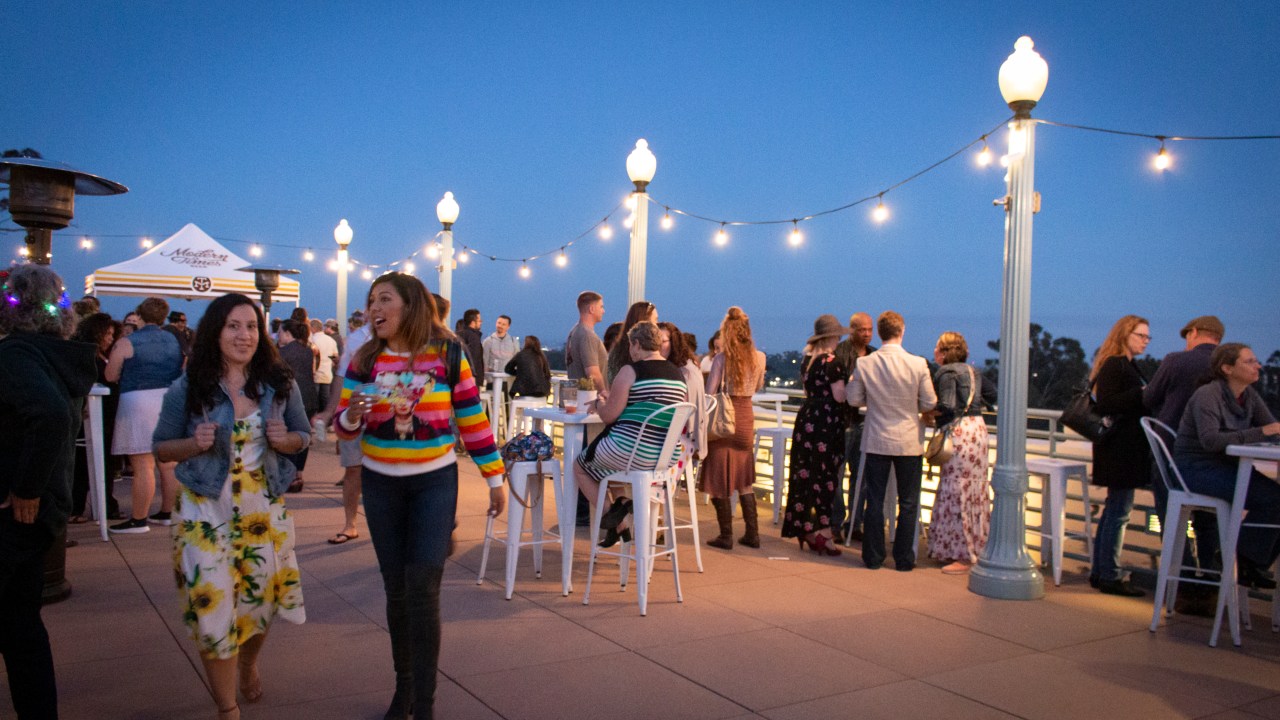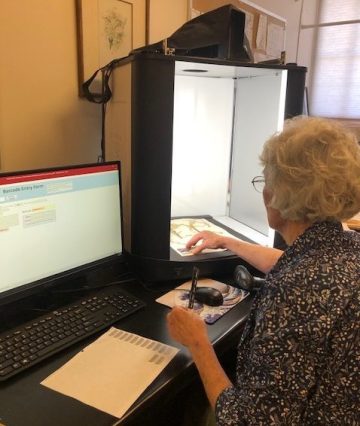
As the saying goes, “it takes money to make money.” Often museums feel they can’t risk their slim financial margin on speculative ventures, but not taking such risks comes with a cost as well—the cost of lost opportunities. In today’s guest post, Judy Gradwohl, president of the San Diego Natural History Museum, tells us about two modest “investments” at SDNHM that resulted in both financial profits and mission-related returns.
–Elizabeth Merritt, VP Strategic Foresight and Founding Director, Center for the Future of Museums
Many museums search for the holy grail of earned revenue that is independent of attendance. Like numerous other non-profits, the San Diego Natural History Museum is greatly dependent on admissions revenue to meet our annual budget goals. Admissions contributes around 20 percent of our annual revenue, and it is a multiplying factor for several other sources of income. Attendance is correlated with sales in our café and store, and with new membership sales, so it is a critical element of our financial well-being. We work hard to boost attendance through excellent program offerings, customer service, marketing, and social media. However, we can’t control many factors that influence attendance, including the weather, traffic and parking issues, and other forms of competition for leisure time. For this reason, any lines of revenue that operate independently of normal admissions are extremely valuable.
In this post, I present two examples of how relatively small financial investments paid off in a major way for the museum. The benefits have included a financial return, return on mission, and, for staff, the satisfaction of exercising their creativity.
A history of earned revenue
Over the past twenty-five years, SDNHM has developed several business ventures that now contribute around one-quarter of our annual revenue. With a significant track record of scientific consulting experience, we are a trusted and competitive source of the expertise needed to comply with California’s Environmental Quality Act. Consulting contracts—primarily for paleontological monitoring of construction sites when digging occurs in fossil-rich sedimentary soils, and biological monitoring of endangered species—provide the largest share of earned revenue, and fully support the operations of our scientific and collections staff.
Our entrepreneurial staff continues to experiment with new forms of earned revenue, with the goal of supporting our work in science and education. We have found that contract work and creative uses of our venue provide crucial revenue independent of admissions.
Two recent success stories, one about consulting and one about venue use, originated through the museum’s Evolutionary Venture Fund (EVF). This grant-supported pool of funding is available to staff who present ideas that have the potential to make a significant difference in any aspect of our operations. The EVF grant process is detailed in this article in Museum magazine.
Herbarium specimen imaging station

SDNHM’s herbarium collection contains nearly 250 thousand specimens, preserved by gluing pressed and dried plant samples to archival herbarium sheets. When stored under proper conditions and handled with care, these specimens remain intact for a very long time. Our oldest specimens, nearly 150 years old, are almost indistinguishable from more recent collections. In 2018, Botany Department staff requested EVF funding for a specimen imaging station that would allow specimens to be photographed face up, which is much safer than the face-down positioning on a typical flatbed scanner. The imaging process is also considerably faster than flatbed scanning, and the easy-to-use equipment can be operated by volunteers. Herbarium staff requested $6,500 in EVF funding to purchase the imaging station as part of a project to create an online resource for plants of neighboring Imperial County, CA. However, once the imaging station was up and running, staff quickly found that the digitizing capability generated additional interest and funding.
The imaging station made it possible for us to join a National Science Foundation Thematic Collections Networks grant to twenty-two organizations, entitled Capturing California’s Flowers: Using Digital Images to Investigate Phenological Change in a Biodiversity Hotspot. We also received funding to digitize small collections from Cabrillo National Monument and San Clemente Island. The imaging station allowed us to accession these specimens into our collection, and provide both organizations with digital copies. Several other small collections have also offered the museum contracts for digital scanning of herbarium specimens.
That initial investment of $6500 has created a return of over $90,000 in grants and contracts to date, and enabled us to make twenty thousand specimens available electronically. We were able to implement these grants and contracts chiefly through long standing relationships and an existing system of work for hire. The imaging station is an interesting vehicle for our collections to generate their own support. The combination of conditions that made the scanning station a financial success for our museum might be hard to replicate at other museums, but thinking creatively about staff talent and resources may translate.
Rooftop furnishings
Another EVF project we launched may be more easily replicable at other museums. The museum has a spectacular yet underutilized rooftop deck. One of the barriers to use was a lack of furniture and shade protection for guests. Staff submitted an EVF proposal for $12,000 to purchase high-top tables and chairs, suggesting that the furniture could be used for museum events and as rental equipment for special events rentals. This part of the plan has been a success, but it was eclipsed by new uses of the rooftop.
Once the furniture was in place and the rooftop was spruced up through painting and plants, the site became a more desirable rental space, and an excellent site for a rooftop bar and café. The museum extended evening hours until 10 p.m. and charged half-price admission starting at 5 p.m. on summer Friday nights. We sold beer and wine through our liquor license, and a local restaurant served food, creating a very popular destination. We found that the presence of the bar, late hours for the entire museum, and a trivia contest attracted a crowd we didn’t usually see in the museum during regular hours.
In the second summer that we operated the rooftop, we expanded late hours to include Thursday as well as Friday nights, created a more expansive bar and café menu, and continued to attract capacity crowds. The return on the initial investment for furniture, paint, and plants has been both monetary and mission-related. The rooftop attracted new and diverse visitors, some of whom became members; the Education department used the venue to test various types of educational activities; and everyone enjoyed the view and ambiance. The rooftop has also become a great venue for donor events, and led to late-afternoon VIP museum tours that end with a drink on the roof. It is hard to calculate the financial return on the initial $12,000 investment, but it was substantial.
Venture funds in the hands of imaginative and entrepreneurial staff have yielded income many times greater than the initial investment, and the museum values these financial returns. The true benefits, however, reach far beyond money to include building relationships with clients, generating new audiences and members, educational programming and scientific study opportunities, and the satisfaction of recognizing staff creativity.









Really inspiring stories – thank you for sharing.
I believe commitment to “mission-related returns” is absolutely critical to avoid distraction by revenue seeking alone. Your examples are great illustrations of how requiring mission-related returns as an essential part of any project can bolster success and virtually assure against failure.